How investors can capitalise on this growing market through diversified exposure.
There’s no denying the momentum in government defence spend generating tailwinds for companies in the listed space with defence exposure that has caught the eye of many investors in 2025. Electro Optic Systems, Droneshield and Austal are up 500%, 700% and 177% respectively this year alone. So while investors may be thinking they have missed the boat or ship with such stocks in their portfolio, there are ways to gain exposure to the defence theme without direct exposure to a defence stock, and it is through commodities that are fundamental to the creation of the hardware and software’s at the core of the listed defence stock operations.
Breaking it down, what actually goes into a drone, a jet engine, or a submarine? As many as 12 defence-critical raw minerals are needed including titanium, aluminium, copper, steel, graphite, rare earths, lithium, cobalt, gallium, tantalum and more, thus driving demand for such minerals at a time supply is constrained therefore leading to tailwinds for prices of such commodities.
Of Australia’s estimated $39.1bn defence spend in 2024, critical minerals allocation was $8.8bn, and the Albanese government pledged $1.2bn for critical minerals strategic reserve back in April 2025 in response to US tariffs as the world’s largest economy bolsters its stockpiles amid growing defence activity and expenditure.
The US remains the world’s top military spender with US$2.32tn distributed among the US department of Defence’s 6 sub-components and the outlook for that number to grow in 2026. China and Russia place 2nd and 3rd in defence spend with $373bn and $225bn respectively spend in 2024, and India comes in 4th with a spend of $132bn last year.
As governments globally double down on defence sovereignty and advanced military capability, the demand for the commodities underpinning this modernisation is surging. From the alloys that reinforce fighter jets to the conductive materials powering unmanned aerial vehicles and autonomous defence systems, these resources are becoming the silent enablers of national security. And investors are taking note.
Titanium, often referred to as the “metal of the future”, is seeing a resurgence as defence applications expand beyond aerospace into hypersonic weaponry, naval systems, and next-generation drones. The US Department of Defence recently increased procurement contracts worth up to US$99 million, reinforcing titanium’s strategic importance. Locally, IperionX (ASX: IPX) is positioning itself as a key domestic supplier, aligned with both US and Australian critical minerals security frameworks. With costs falling from around US$75/kg to US$29/kg as production scales, and capacity set to lift from 200 tonnes per annum today to over 10,000 tonnes by 2030, the company’s profitability outlook is improving rapidly. Titanium prices remain elevated on the back of tight supply, rising defence demand, and ongoing sanctions on Russian suppliers, keeping the metal’s long-term trajectory firmly bullish.
Copper, too, is emerging as a quiet outperformer, not only as a cornerstone of the green energy transition but also as an essential element in the defence ecosystem. Its unmatched electrical and thermal conductivity make it critical for radar systems, missile guidance, naval wiring, and high-precision electronics. Copper prices have continued to rise through 2025 amid constrained new high-grade supply and elevated demand from both defence and renewables. Locally, Aeris Resources (ASX: AIS) is one to watch, having posted a $45 million NPAT turnaround and strong operational cash flow despite heavy capital expenditure. With copper prices pushing higher, AIS remains highly leveraged to this structural demand story through offering pure-play exposure to the defence-driven copper tailwind.
Aluminium is another critical input that continues to benefit from increased defence infrastructure spending. Lightweight, durable, and corrosion-resistant, aluminium forms the backbone of aircraft fuselages, ship hulls, and armoured vehicles. As global aluminium inventories remain at multi-year lows, the pricing outlook remains favourable, particularly as nations ramp up production of both commercial and military aircraft. The same can be said for graphite, cobalt, and rare earths as each are vital to the electrification of defence systems, from energy-dense battery cells to high-performance magnets used in guidance and propulsion technologies.
While Australia’s defence spend of $58.4 billion in FY25/26 (just over 2% of GDP) lags the commitments of its allies, the government’s additional $50.3 billion investment over the forward estimates will continue to create powerful tailwinds for the local critical minerals market landscape. The $1.2 billion critical minerals reserve and the push to onshore supply chains amid global tensions further underline the government’s commitment to securing these materials.
For investors, this shifting landscape presents a clear opportunity. Direct defence exposure through listed manufacturers may appear fully priced after significant gains in 2025, but the upstream beneficiaries through miners, processors, and materials innovators, are just beginning to capture market attention. Strategic exposure to diversified commodity producers like AIS and IPX, or ETFs focused on critical minerals, could offer investors leveraged participation in the ongoing rearmament cycle without the volatility of pure defence stocks.
Ultimately, the resurgence in global defence expenditure has ignited a new commodity super cycle; one that is less about speculative demand and more about strategic necessity. As nations prioritise sovereignty, supply chain security, and advanced defence capability, the metals that power this transformation are set to remain in focus for years to come. The investment opportunity lies not only in direct defence exposure, but in the miners and material innovators fuelling their growth.
While volatility in commodity markets and shifting geopolitical dynamics will continue to influence short-term pricing, the long-term outlook remains structurally bullish. Titanium, copper, aluminium, and rare earths are no longer just industrial inputs; they are defence assets in their own right in 2025. For investors, diversified exposure to these critical commodities provides a unique way to participate in one of the most powerful global investment themes of the decade: the rise of the rearmament trade.
This information is general in nature and does not take into account your financial situation, objectives or needs. You should consider whether it is appropriate for you. You should read our Financial Services Guide and any relevant Product Disclosure Statements before making an investment. For more information visit belldirect.com.au or call 1300 786 199. Bell Direct is the trading name of Third Party Platform Pty Ltd ABN 74 121 227 905, AFSL 314341.




